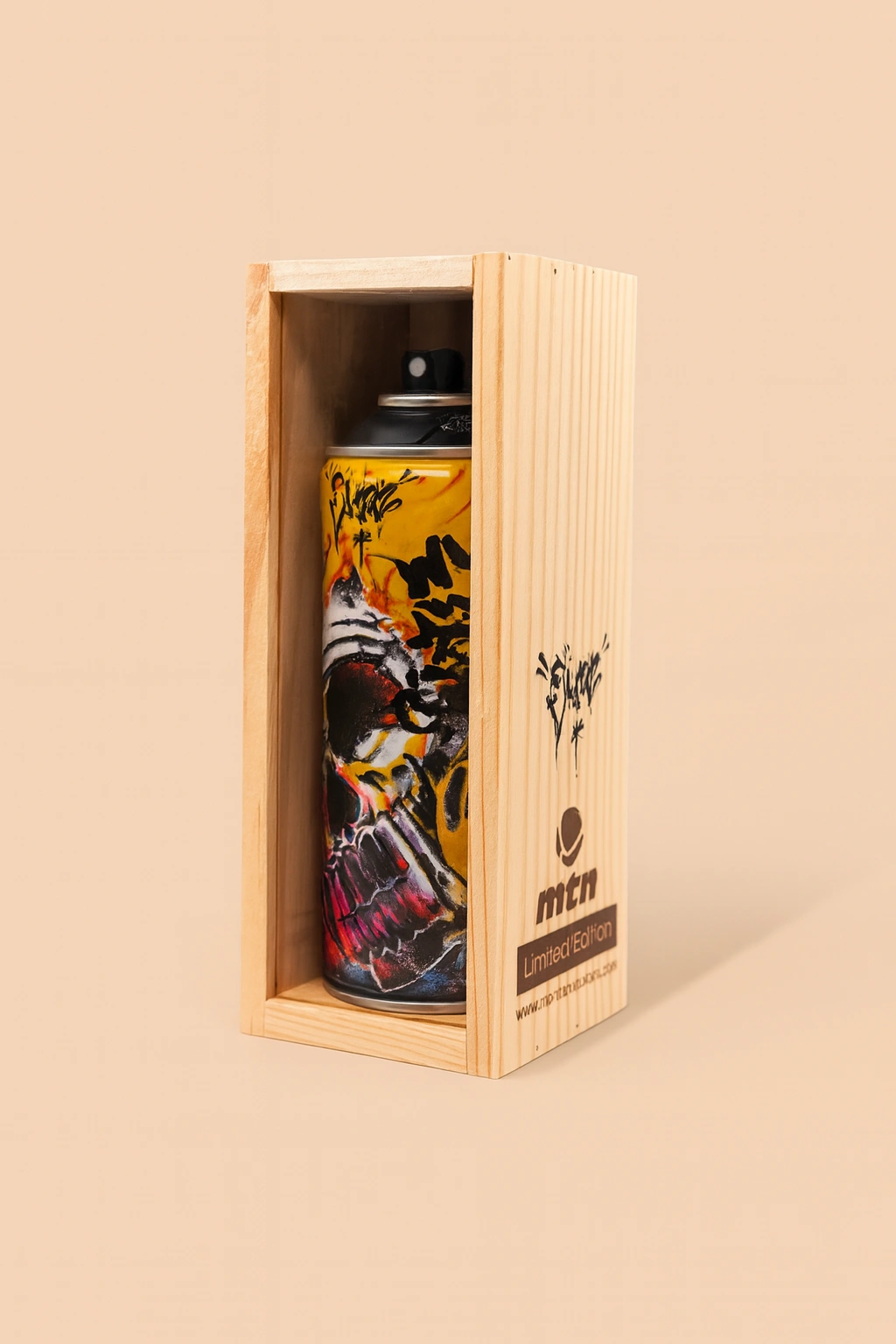In the world of contemporary art, few artists have captured the public’s imagination quite like Julia Chiang and KAWS (real name: Brian Donnelly). Both have carved out successful careers with distinct artistic voices—Chiang with her evocative ceramic and sculptural works, and KAWS with his iconic pop culture-infused figures and street art. However, what many may not realize is that behind their individual successes lies a personal and creative partnership, as the two artists are also husband and wife. Their relationship, both personal and professional, offers a unique lens through which to explore the intersections of love, work, and creativity.
In a recent interview, the couple sat down to interview each other about their life together, offering insights into how their relationship has shaped their artistic journeys. Their conversation highlights the complexities of balancing love and career, the challenges of being in the public eye, and the ways in which their individual practices inform and inspire one another. At its core, their dialogue reveals a deep connection rooted in mutual respect, shared experiences, and a commitment to their craft.
Art as a Shared Language
For Chiang and KAWS, art is not just a profession—it is a shared language that has been central to their relationship from the very beginning. Both artists had established themselves within the art world before they met, but their relationship brought a new dimension to their work. In the interview, KAWS describes how having a partner who is also an artist creates a unique understanding between them, as they are able to communicate about the highs and lows of their creative processes in ways that others might not fully grasp.
Chiang echoes this sentiment, explaining that their shared passion for art allows them to support each other through moments of creative doubt or frustration. In a field that can be isolating, having a partner who truly understands the pressures of working in a competitive and often subjective industry is invaluable. For Chiang, KAWS’ feedback is particularly meaningful, as it comes from someone who not only knows her work intimately but also understands the emotional and intellectual effort that goes into creating it.
Their partnership, however, is not without its challenges. Both acknowledge that balancing their personal relationship with their professional lives can be difficult at times, especially when they are working on major projects or exhibitions. There is often a tension between wanting to be fully present for each other and the demands of their individual artistic careers. Yet, they have found ways to navigate this, often using their art as a means of maintaining their connection, even when their schedules pull them in different directionsThe Intersection of Love and Work
One of the most compelling aspects of Chiang and KAWS’ relationship is the way in which love and work intersect so seamlessly in their lives. Unlike many couples who keep their professional and personal lives separate, Chiang and KAWS have found that the two are inextricably linked. In the interview, KAWS speaks candidly about how his relationship with Chiang has influenced his work, both directly and indirectly. He notes that many of his most successful pieces have been created during periods when their relationship was thriving, suggesting that love and creativity are closely intertwined in his practice.
Chiang, too, reflects on how their relationship has impacted her art, particularly in terms of the emotional support and encouragement she receives from KAWS. She describes how working alongside someone who is equally passionate about their craft has pushed her to take risks and experiment in ways she might not have otherwise. For Chiang, the emotional depth of their relationship often finds its way into her art, with themes of intimacy, vulnerability, and connection becoming central to much of her recent work.
At the same time, the couple is careful to maintain a sense of independence in their creative practices. While they frequently discuss their work and offer feedback to one another, they are mindful of not imposing their own artistic visions on each other. Both artists emphasize the importance of maintaining their individual voices, even as they continue to grow together as partners.
Navigating Public Life as Artists
As high-profile figures in the art world, Chiang and KAWS are no strangers to the pressures that come with public life. Their works have been exhibited in major galleries and museums around the world, and KAWS, in particular, has garnered a large following thanks to his collaborations with brands like Uniqlo, Nike, and Dior. With this level of visibility comes a unique set of challenges, particularly in maintaining a balance between public personas and private lives.
In the interview, the couple discusses the ways in which they navigate this dynamic, acknowledging that their public profiles can sometimes feel overwhelming. Chiang, who is more private by nature, admits that the level of attention her husband receives can be difficult at times, but she also appreciates the way KAWS has used his platform to bring attention to important causes and issues. KAWS, on the other hand, has always embraced the more commercial aspects of his career, seeing them as opportunities to reach wider audiences and make art accessible to people who might not typically engage with it.
Despite their differing approaches to public life, both artists agree that maintaining a sense of authenticity is crucial. For KAWS, this means staying true to his artistic vision, even when working on commercial projects. He explains that while some may view his collaborations with major brands as “selling out,” he sees them as a way to democratize art and bring it into everyday life. Chiang, too, emphasizes the importance of authenticity, noting that she has always prioritized making work that feels personal and meaningful, rather than catering to market trends or public expectations.
Influence and Inspiration
As two highly successful artists working in different mediums, Chiang and KAWS have inevitably influenced each other’s practices over the years. Their conversation reveals how they continue to inspire one another, both artistically and personally. KAWS admires Chiang’s ability to create work that is both delicate and emotionally resonant, often drawing inspiration from the vulnerability and intimacy that defines her pieces. He describes how watching her work has encouraged him to explore new forms of expression in his own art, particularly in terms of emotion and narrative.
Chiang, in turn, speaks to the influence KAWS has had on her approach to scale and materiality. Known for his large-scale public installations and iconic figures, KAWS has pushed the boundaries of what is possible in contemporary art, and this sense of ambition has inspired Chiang to think more expansively about her own work. She explains that while her art is often smaller in scale, KAWS has encouraged her to consider the broader impact of her pieces and how they interact with space and the viewer.
Beyond their artistic practices, the couple finds inspiration in their shared experiences and the life they have built together. Their conversation touches on the importance of travel, family, and the everyday moments that fuel their creativity. Whether exploring new cities, spending time with their children, or simply sharing a meal, Chiang and KAWS see these experiences as integral to their work. For them, life and art are not separate but intertwined, with each feeding into the other in a continuous cycle of inspiration.
Looking Ahead: The Future of Their Art and Relationship
As they reflect on their journey together, both Chiang and KAWS are optimistic about the future. While they acknowledge that balancing their personal and professional lives will continue to be a challenge, they are excited about the opportunities that lie ahead. KAWS, who has already achieved global recognition for his work, is eager to explore new mediums and expand his artistic practice, while Chiang is focused on continuing to develop her voice as an artist and push the boundaries of her chosen materials.
Their conversation also reveals a deep sense of gratitude for the life they have built together, both as partners and as artists. For Chiang and KAWS, their relationship is a source of strength and inspiration, one that has allowed them to take risks, grow as individuals, and create work that resonates with audiences around the world. As they look ahead, they are committed to continuing this journey together, navigating the complexities of love, life, and art with the same passion and dedication that has defined their careers thus far.
A Partnership Rooted in Love and Art
The interview between Julia Chiang and KAWS offers a rare glimpse into the personal and professional dynamics of two artists at the top of their fields. Their conversation reveals the depth of their connection, not only as husband and wife but as creative partners who share a deep respect for each other’s work. Through their dialogue, we see how love and art intersect in their lives, fueling their creativity and shaping their artistic journeys.
In a world that often separates the personal from the professional, Chiang and KAWS have found a way to merge the two, creating a partnership that is as fulfilling personally as it is artistically. Their story is a testament to the power of collaboration, not only in the traditional sense but in the way they support, inspire, and challenge each other. As they continue to evolve as artists and as a couple, there is no doubt that their relationship will remain a driving force behind their work, both individually and together.
No comments yet.








